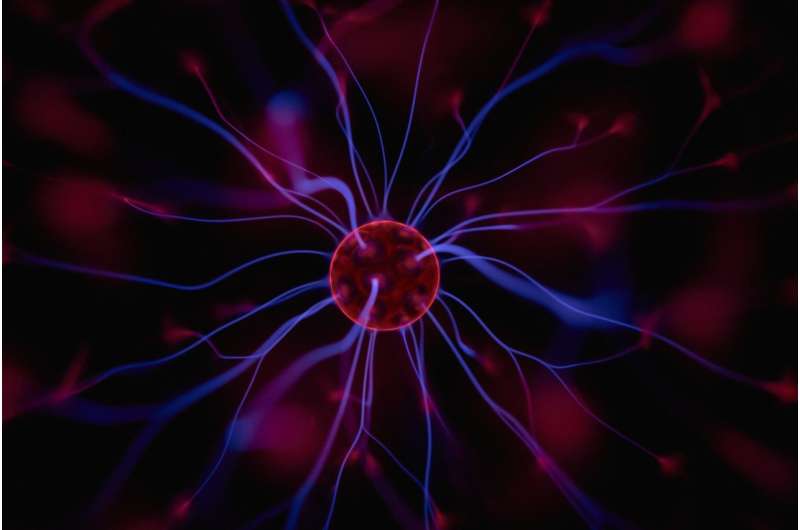Credit: CC0 Public Domain
A pair of researchers, one with Manly Astrophysics, the other with Universidad de Murcia, has proposed the existence of a new type of neutron star. In their paper published in the journal Physical Review Letters, Arthur Suvorov and Kostas Glampedakis suggest that an exotic type of neutron star could be created if there is an ultra-strong magnetic field created during a collision between neutron stars.
Prior research has suggested that neutron stars form when a star collapses under its own gravity, setting off a supernova. The remnant neutron star is much smaller and has a high density. Other research has suggested that if two neutron stars collide, they would create a single object with a mass that is greater than the Tolman–Oppenheimer–Volkoff limit, and would therefore collapse into a black hole. The limit only applies to neutron stars that cease rotating due to the collision, however. Prior research has suggested that if the new star does spin, it could exist for a while before collapsing to a black hole. In this new effort, the researchers suggest that a star that is not spinning could still persist for a period of time under unique circumstances.
Suvorov and Glampedakis suggest that if a sufficiently strong magnetic field is generated as the two stars collide, it could stave off the descension of the single mass into a black hole—perhaps for as long as several years. They suggest the lifetime of such a star would depend on a host of factors, including the strength of the magnetic fields of both neutron stars prior to the collision, their mass and their core temperatures.
The researchers also suggest that if such a neutron star came to exist, it would have a unique signature, consisting of quick bursts of gamma rays and then X-rays during its initial stage, and then quick blasts of radio waves when its gravity field was fading to the point that it begins collapsing into a black hole. They further note that detecting such signals should be possible with existing equipment and that it could be done in tandem with searches for gravitational waves from neutron stars.
More information: Arthur G. Suvorov et al, Magnetically supramassive neutron stars, Physical Review D (2022). DOI: 10.1103/PhysRevD.105.L061302
Journal information: Physical Review Letters , Physical Review D
© 2022 Science X Network
























